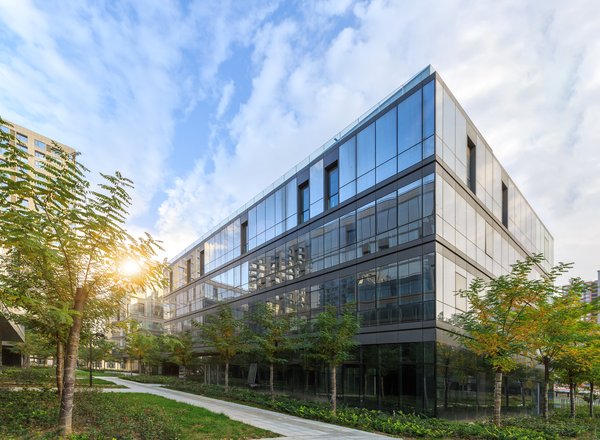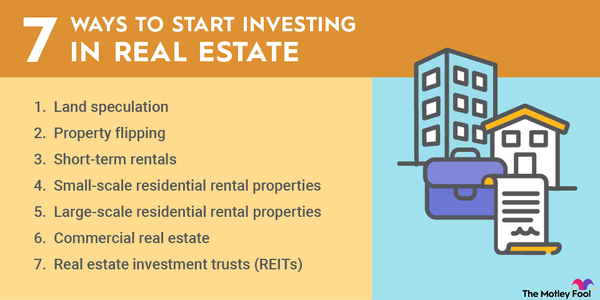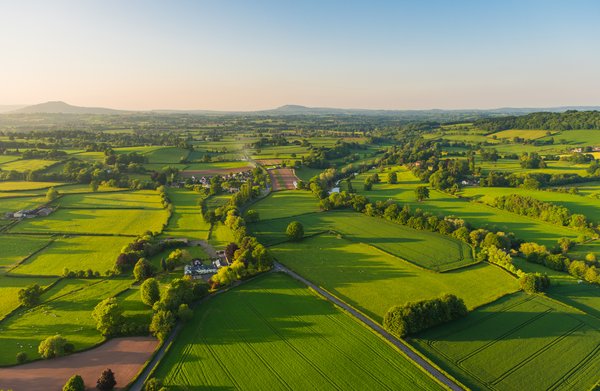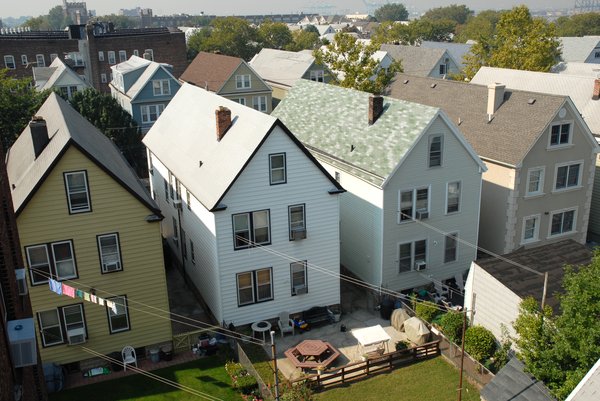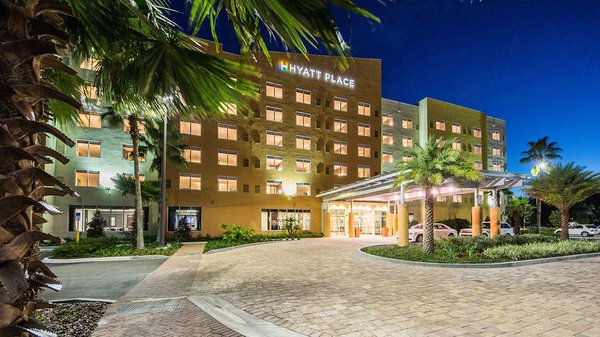Most residential neighborhoods aren't terribly complex. A homebuilder buys a plot of land, divides it into buildable lots, and builds out roads, utilities, and other infrastructure. Then they build homes and sell them to buyers. There may be some sort of recreational amenities, such as walking trails, ponds, or a community pool, but that's about it.
A master-planned community, or MPC, is on another level entirely. These are residential neighborhoods, but they have more in common with small cities than with the subdivisions created by most homebuilders. Here's an overview of what a master-planned community is, why they can make good investments, some examples of real-world MPCs, and how to invest in master-planned communities through the stock market.
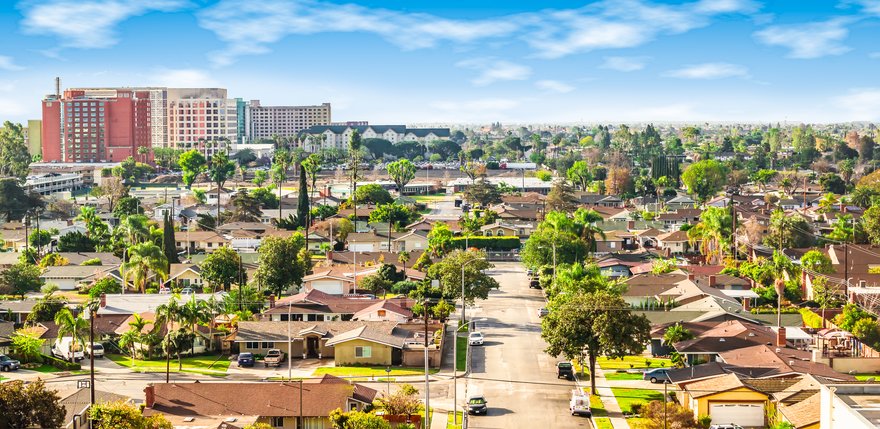
What is a master-planned community?
A master-planned community, or MPC, is a large, planned residential neighborhood. In contrast to most residential developments, MPCs are often self-contained small cities, with commercial properties and extensive recreational, educational, and other amenities. It's not uncommon for an MPC to be 10,000 acres (15.6 square miles) or greater in size.
Master-planned communities often have recreational amenities such as golf courses, pools, walking trails, and lakes. They often have their own school systems, shopping and business districts, and other components you might expect to find in a typical suburban town.
Many MPCs are located near major cities. For example, the Summerlin neighborhood near Las Vegas, Nevada, is a master-planned community.
The general development idea with an MPC is that a developer will acquire a massive plot of land and gradually sell it to residential builders or commercial developers to build out the community over time. In the next section, we'll look at an example of a master-planned community in the real world.
There are several reasons people might choose to live in an MPC. The convenience factor is a big one -- since master-planned communities are often self-contained in terms of access to commercial amenities, residents often have everything they need within a few minutes' drive of their homes. MPCs are generally designed to be places where residents can live, work, and shop without having to leave.
Why master-planned communities can make great investment opportunities
A master-planned community is a unique type of real estate business model with some pretty appealing advantages for long-term investors.
In a nutshell, MPCs are designed to create a cycle of value creation. And while there is certainly some variation among communities, the general idea looks something like this:
- The MPC's developer acquires thousands of acres of empty, but usable, land.
- The developer initially sells a small portion of the land to homebuilders, who create residential neighborhoods.
- These neighborhoods create demand for commercial properties. For example, a convenience store or car wash could do quite well if it's the only business of its kind that is close to a new neighborhood. So, the developer either builds these properties itself or sells land to commercial developers.
- The existence of these amenities makes the remaining land more valuable, so the MPC developer sells some more of the land to homebuilders at the now-higher valuation.
- This cycle repeats, and as the population grows, so does demand for increasingly valuable amenities. Some larger MPCs have office towers, sports arenas, and large shopping districts. It can take several decades for an MPC to be fully built out.
Here's the key point. With full control of the land in essentially a small city, the MPC developer has complete control of supply and demand in the area, which is a key advantage when trying to unlock the value of buildable land. In other words, when a homebuilder decides to develop a new neighborhood in an area, they don't have any control over the development of commercial properties or other competing neighborhoods in the vicinity. An MPC developer does and can use this control to produce excellent returns over time.
Examples of master-planned communities
An example of a large-scale, mature MPC is The Woodlands in the Houston metropolitan area. The community is a massive 28,475 acres in total and has a current population of about 118,000, which has gradually been built up since the mid-1970s. More than 2,000 employers operate in The Woodlands, and over 68,000 people work within the community.
The Woodlands has 4.2 million square feet of office space, 532,000 square feet of retail properties, over 2,600 apartments, and hotels with more than 900 rooms in total that are owned by the Howard Hughes Corporation (NYSE:HHC), the MPC's developer, who generates income from these commercial properties supported by the surrounding community. While the master-planned community still has some developable land, it's largely a mature, self-contained city at this point.
Bridgeland, also in the Houston area, is a good example of an earlier-stage MPC. Launched in 2003, also by the Howard Hughes Corporation, Bridgeland has 11,470 acres of land, much of which is still untouched. The community is expected to eventually grow to 65,000 residents after it sells out in 2034 (projected), but it currently has just about 10,000. There are still nearly 2,200 acres of residential land available and over 1,500 acres of eventual commercial-use land.
How to invest in master-planned communities
There are a few publicly traded companies with operations in master-planned communities. To name a couple, Brookfield Property Partners (NYSE:BPY) and D.R. Horton (DHI -2.53%) both have MPCs that are among the top-selling in the United States.
However, neither of these are a pure play on the MPC business. Brookfield owns and operates a wide variety of real estate assets, while D.R. Horton is primarily a homebuilder.
For a pure play, Howard Hughes Corporation, whose communities I used as our examples in the previous section, is almost exclusively focused on the master-planned community business. It has six core communities -- The Woodlands, Woodlands Hills, and Bridgeland, all in the Houston area, Summerlin near Las Vegas, Columbia in Maryland (between D.C. and Baltimore), and Ward Village in Hawaii.
The company takes an extreme long-term approach to creating shareholder value through its MPCs and has several decades of runway ahead of it. I already mentioned that the Bridgeland community isn't even one-sixth of its eventual built-our population yet, and Summerlin has the capacity for over 100,000 additional residents. Those communities were the number 12 and number three top-selling MPCs in the U.S. for 2019.
Each of the company's MPCs has its own K-12 school system, police and fire departments, and shopping and dining amenities. The company has referred to its business model as a real-life version of the video game classic Sim City, and it's not hard to see why.
One thing to keep in mind, however, is that Howard Hughes is a very unique real estate company. It isn't an income-focused investment like a real estate investment trust, or REIT, and it's not focused on earning near-term profits like most homebuilders are. This has made the company very difficult to value, and even Howard Hughes' Board of Directors has expressed its frustration at the market's inability to fully "grasp" the long-term potential of the company's business.
The bottom line on master-planned communities
Master-planned communities can be excellent investment opportunities, but it's important to realize that they are best suited for investors with a very long time horizon. Most MPCs take several decades to fully unlock their potential, and they can be difficult to value using any traditional methods.










